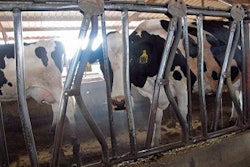SALT LAKE CITY (AP) — Utah regulators called Monday for stricter controls on industrial emissions to reduce sooty pollution that typically settles in the heavily populated Wasatch Front for weeks in bowl-shaped valleys that trap smog.
Regulators opened a month-long public comment period Monday on three sets of comprehensive clean-air plans for northern Utah.
"We'll be seeing huge reductions in emissions over the next five to seven years that really impact us during our winter inversion periods," Utah Division of Air Quality Director Bryce Bird said. "These plans will work."
The effort is expected to reduce emissions by nearly a third over the wider Salt Lake City metropolitan area, from 366 tons to 243 tons a day, he said.
Utah must provide plans to the U.S. Environmental Protection Agency by Dec. 15. The Utah Air Quality Board intends to act before that to make the plans into laws that will take effect immediately with a series of deadlines for action, Bird said.
Opposition is building, however.
State regulators are recommending vehicle emissions tests in Cache County over the objection of local lawmakers. The tests have been in place for many years in Utah, Salt Lake, Davis and Weber counties.
The Cache County Council rejected a vehicle emissions program on Aug. 14, but the Utah Air Quality Board says it has the power to bend county lawmakers to state authority.
Bird, however, said he will try to persuade Cache County to go along or substitute other pollution reduction strategies, such as requiring large employers to provide carpools and let employees work from home on bad-air days.
"We'll exhaust all the options," he said.
Industrial bakeries also are objecting. Under new rules, such operations will be required to install expensive catalytic converters for their ovens to remove ethanol, a byproduct of yeast leavening. Catalytic converters burn off volatile organic compounds that contribute to smog.
EarthGrains Baking Cos. Inc. told regulators the converters will cost too much, and it can't meet deadlines to install them in time.
By the company's math, it costs $9,735 to scrub a ton of ethanol from oven exhausts. Industrial bakeries subject to the rule release a total of 170 tons of ethanol a year, Bird said, for an annual cleansing cost of $1.65 million. EarthGrains didn't immediately respond to calls Monday from The Associated Press.
Utah regulators are counting on people buying new cars to achieve much of the improvement in air quality. Tailpipe emissions are the biggest source of air pollution.
The state's single largest polluter, Kennecott Utah Copper, will eventually face stricter mandates to cut emissions from its open pit and smelter operations.
But first, Kennecott will be allowed to increase pollution with expanding operations, before sharply reducing emissions by 2019. Kennecott says it has managed to keep emissions steady through more efficient operations, yet a group of doctors and Utah mothers sued the company in December to force reductions. The company says it operates with the blessing of state regulators.
Utah's pollution problem often turns acute during winter, when high pressure systems keep winds from scouring mountain valleys clean.
A thick layer of smog can foul the state's air so badly that health officials often warn people not to exercise outside, and some schools kept children inside for recess and sports. The haze is a potent cocktail of tailpipe exhaust, industrial pollution and emissions from homes and businesses.
The haze contains a complex mix of extremely fine particles — 1/40th the size of a human hair — that Utah doctors say can easily lodge in the lungs and send blood pressure soaring. The mix includes organic chemicals, metals, soil and dust, together with acids, nitrates and sulfates.
The material is so abrasive it can deteriorate building exteriors, state officials say in their plans.






















